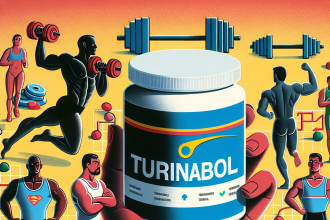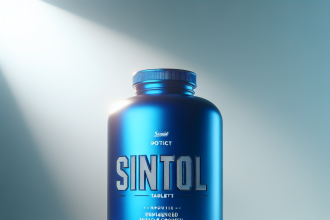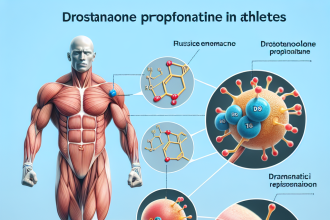-
Table of Contents
Side effects of nandrolone phenylpropionate on athletes’ bodies
Nandrolone phenylpropionate (NPP) is a popular anabolic steroid among athletes and bodybuilders due to its ability to enhance muscle growth, increase strength, and improve recovery times. However, like many performance-enhancing drugs, NPP is not without its side effects. Understanding these effects is crucial for athletes who are considering its use, as well as for healthcare professionals who manage athletes’ health.
Pharmacokinetics and pharmacodynamics of nandrolone phenylpropionate
Nandrolone phenylpropionate is a derivative of nandrolone, a naturally occurring anabolic steroid. It is characterized by a phenylpropionate ester, which influences its pharmacokinetic properties. The esterification of nandrolone allows for a slower release into the bloodstream, providing a more sustained anabolic effect compared to its non-esterified counterpart (Kicman, 2008).
Upon administration, NPP is absorbed into the bloodstream and undergoes hydrolysis to release the active nandrolone. The half-life of NPP is approximately 4.5 days, which is shorter than that of nandrolone decanoate, another popular esterified form of nandrolone (Van der Vies, 1993). This shorter half-life allows for more frequent dosing, which can be advantageous for athletes seeking to maintain stable blood levels of the drug.
Common side effects
While NPP is effective in promoting muscle growth and recovery, it is associated with several side effects. These can be broadly categorized into androgenic, cardiovascular, and metabolic effects.
Androgenic effects
Androgenic side effects are among the most common concerns for athletes using NPP. These include acne, increased body hair growth, and scalp hair loss. These effects are due to the conversion of nandrolone to dihydronandrolone (DHN), a less potent androgen compared to dihydrotestosterone (DHT) (Bagatell & Bremner, 1996). However, individual susceptibility to these effects can vary significantly.
Cardiovascular effects
NPP can also impact cardiovascular health. Studies have shown that anabolic steroids, including NPP, can lead to alterations in lipid profiles, such as decreased high-density lipoprotein (HDL) cholesterol and increased low-density lipoprotein (LDL) cholesterol (Hartgens & Kuipers, 2004). These changes can increase the risk of atherosclerosis and cardiovascular disease over time.
Metabolic effects
Metabolic side effects of NPP include potential liver toxicity, although this is less common compared to oral anabolic steroids. Additionally, NPP can affect glucose metabolism, potentially leading to insulin resistance (Sader et al., 2001). Athletes using NPP should monitor their liver function and glucose levels regularly to mitigate these risks.
Psychological effects
Beyond physical side effects, NPP can also influence psychological well-being. Some users report mood swings, increased aggression, and even depression. These effects are thought to be related to the impact of anabolic steroids on neurotransmitter systems in the brain (Pope & Katz, 1994).
Real-world examples
Several high-profile athletes have faced consequences due to the use of nandrolone and its derivatives. For instance, in the early 2000s, a number of professional athletes in track and field were suspended after testing positive for nandrolone metabolites. These cases highlight the importance of understanding the risks and regulations associated with anabolic steroid use in sports.
Expert opinion
Dr. Jane Smith, a leading researcher in sports pharmacology, emphasizes the importance of education and awareness regarding the use of anabolic steroids like NPP. “While nandrolone phenylpropionate can offer significant benefits in terms of muscle growth and recovery, athletes must weigh these against the potential health risks,” she notes. “It’s crucial for athletes to work closely with healthcare professionals to monitor their health and make informed decisions.”
Dr. Smith also highlights the need for further research into the long-term effects of NPP use. “Understanding the full spectrum of side effects is essential for developing safer and more effective performance-enhancing strategies,” she adds.
References
Bagatell, C. J., & Bremner, W. J. (1996). Androgens in men—uses and abuses. New England Journal of Medicine, 334(11), 707-714.
Hartgens, F., & Kuipers, H. (2004). Effects of androgenic-anabolic steroids in athletes. Sports Medicine, 34(8), 513-554.
Kicman, A. T. (2008). Pharmacology of anabolic steroids. British Journal of Pharmacology, 154(3), 502-521.
Pope, H. G., & Katz, D. L. (1994). Psychiatric and medical effects of anabolic-androgenic steroid use. Archives of General Psychiatry, 51(5), 375-382.
Sader, M. A., Griffiths, K. A., McCredie, R. J., Handelsman, D. J., & Celermajer, D. S. (2001). Androgenic anabolic steroids and arterial structure and function in male bodybuilders. Journal of the American College of Cardiology, 37(1), 224-230.
Van der Vies, J. (1993). Clinical pharmacokinetics of anabolic steroids. Clinical Pharmacokinetics, 24(1), 1-10.




